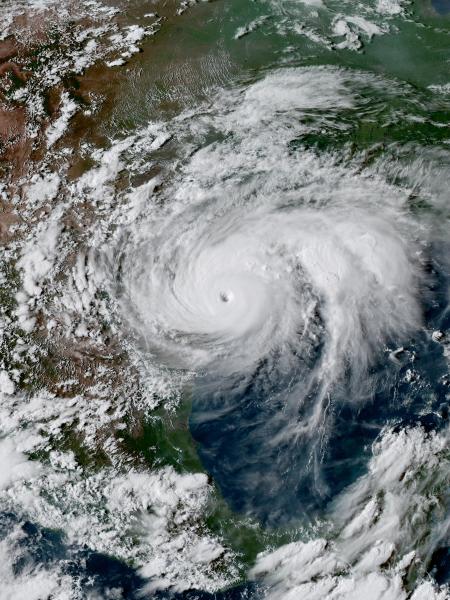- Series:History, Transcript English
Psalm 55:6-8
“And I said, Oh that I had wings like a dove! for then would I fly away, and be at rest. Lo, then would I wander far off, and remain in the wilderness. Selah. I would hasten my escape from the windy storm and tempest.”
 One leading left-wing UK newspaper headlined a report on Hurricane Harvey with these words:
One leading left-wing UK newspaper headlined a report on Hurricane Harvey with these words:
“It’s a fact: climate change made Hurricane Harvey more deadly.”
The newspaper went on to opine that the recent devastating hurricanes in the United States – Harvey and Irma – may not have actually been caused by human activity and industry, but were certainly exacerbated by it. The ferocity of these hurricanes is therefore collectively our fault. The belief is that human activity has so increased the average global temperature that abnormal weather patterns are now becoming the norm, and the only way to solve this problem is to take international multi-national action to reduce the production of greenhouse gases and so work against this global temperature rise.
But how abnormal are these hurricanes? The south coast of the United States of America has hosted numerous terrible storms in the past. For example, the city of Pensacola was first settled by Spanish explorer Tristan de Luna in 1559, but devastated within months by a hurricane, finally leading to the abandonment of that first colony in 1561. Other Gulf Coast communities have suffered hurricane damage since then.
Hurricane Katrina hit New Orleans in 2005. Harvey arrived in 2017. That is a remarkable gap of 12 years, during which the US mainland did not get a hurricane landfall. That fortunate 12 years is the abnormality, not the devastation caused by the storms. The world is not coming to an end until God says so – and that event is in His timing, not ours.
We place our trust in You, O Lord, knowing that all of the world’s weather is in Your hands and that You are in control. Amen.
Author: Paul F. Taylor
Ref: Mann, M. (2017), It’s a fact: climate change made Hurricane Harvey more deadly, , accessed 09/20/2017. Image: NOAA, Public Domain.
